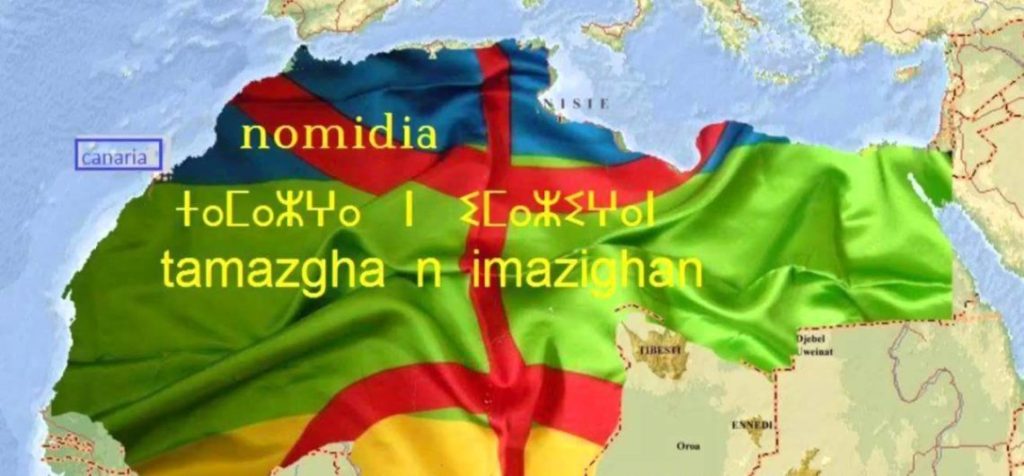By Prof. Muhammad Shamsaddin Megalommatis
Speaking at the 5th Annual Conference of the Network of Oromo Studies (NOS), which took place on 27th February 2021 on Visual Technology, I exposed one more Western colonial distortion, falsification and machination; the title of my speech was: “Fake Nubia: a Colonial Forgery to deprive Cushitic Nations from National Independence, Historical Identity and Cultural Heritage”.
The text of my contribution was published without the notes here:
I herewith publish the first two notes of my speech; they constitute a brief but direct denunciation of the major Western anti-African forgeries, namely
– the Nubianization of the East African Cushites and of their historical past and heritage,
– the disparagement of the Berbers, and
– the denial of the existence of the Hamites.
Although short, this text provides readers with a comprehensive insight into the evil, racist and systematic efforts of distortion of the African past by the Anglo-French and the American criminal fraudsters and biased pseudo-academics.
—————————————–
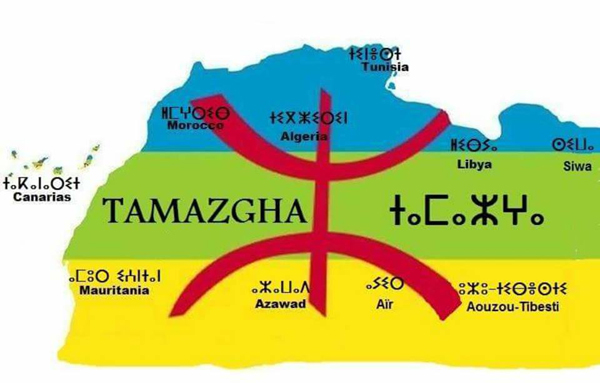
Northern Africa is entire Hamitic, not Hamito-Semitic, not Afro-Asiatic!
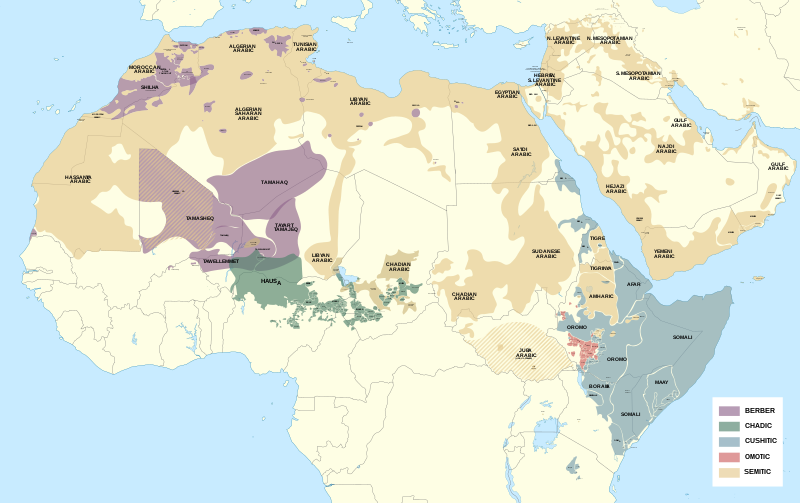
The fallacy of the term ‘Afro-Asiatic languages’ is a byproduct of the forgery of Pan-Arabism. There are no Arabs in Africa; there are only Pan-Arabic and Islamist dictatorships that tyrannically imposed Arabic as official language.
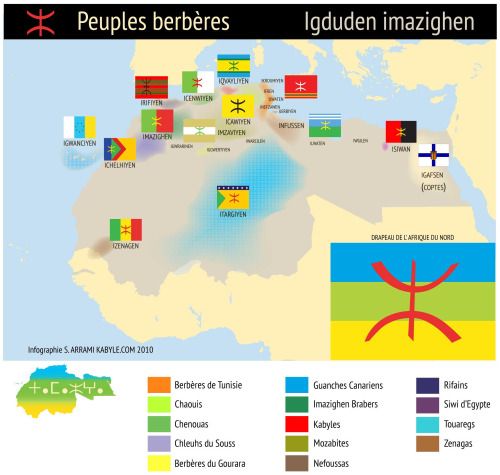
The true map of Northern Africa

The educational tyranny of Arabic must be abolished across Africa. Berber, Coptic and Cushitic languages in Eastern Africa must be declared as official languages.

Whatever is said in the BBC is an evil lie; one of them revolves around the Nubianization of the Cushitic-Meroitic heritage of the Modern Oromos and the other Cushitic Eastern African nations.
Extensive politicization, political exploitation of Nubians’ socio-economic problems in either Egypt or Sudan, colonial falsification of the History of Cush, and usurpation of Cushitic monuments and archaeological sites where most Nubians live today are parallel endeavors of Western academics, diplomats, politicians, Human Rights activists, mainstream media, international NGOs, and other groups of pressure: this is called ‘Nubianization’. The existing vast literature has the evident target to push toward the dismemberment of Egypt and Sudan, by cutting off sizeable territories from both countries (namely South Egypt and North Sudan). For this reason, the old Nubian resentment for the construction of the Aswan High Dam is every now and then rekindled, as Nubians in Egypt never liked their relocation to newly built villages north of Aswan, pretty much like Nubians in Sudan did not enjoy at all their enforced relocation to New Wadi Halfa.
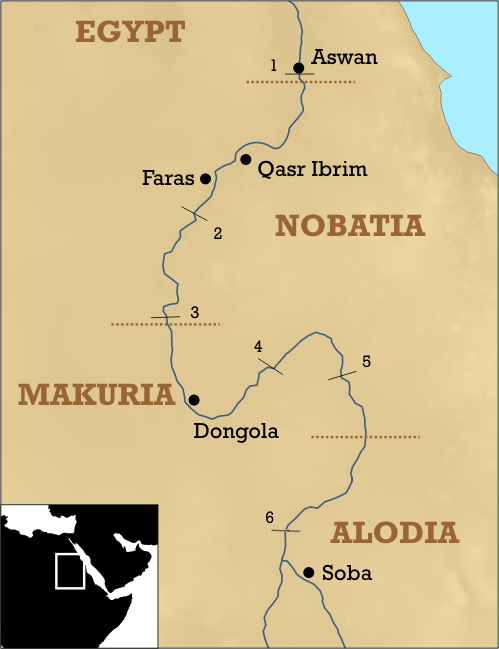
The three Christian kingdoms of Sudan, i.e. true, historical Ethiopia: Nobatia was a Nubian kingdom, but Makuria and Alodia were entirely Cushitic.
Maja Janmyr, Nubians in Contemporary Egypt: Mobilizing Return to Ancestral Lands (29 February 2016): https://www.tandfonline.com/doi/full/10.1080/19436149.2016.1148859
The problem would be limited in the purely political sphere, if the Western colonial plotters did not involve an enormous deal of confiscation of Cushitic monuments, usurpation of ca. 5000 years of Cushitic History, expropriation of historical past from today’s Cushitic nations, and disastrous division among the descendants of the Ancient Hamitic-Cushitic nations of Kemet (Masr-Egypt) and Cush (Arabic-speaking Sudanese and Oromos, Somalis, Afars, Sidama, Kaffa, etc).
In fact, there is not and there cannot be any divide between
a) Arabic-speaking Cushites-Hamites in today’s Egypt and Sudan, and
b) Cushitic-Hamitic native speakers from the African Atlas and the Sahara to the Nile Delta and thence, across the Eastern African inland and coast, down to Mombasa.
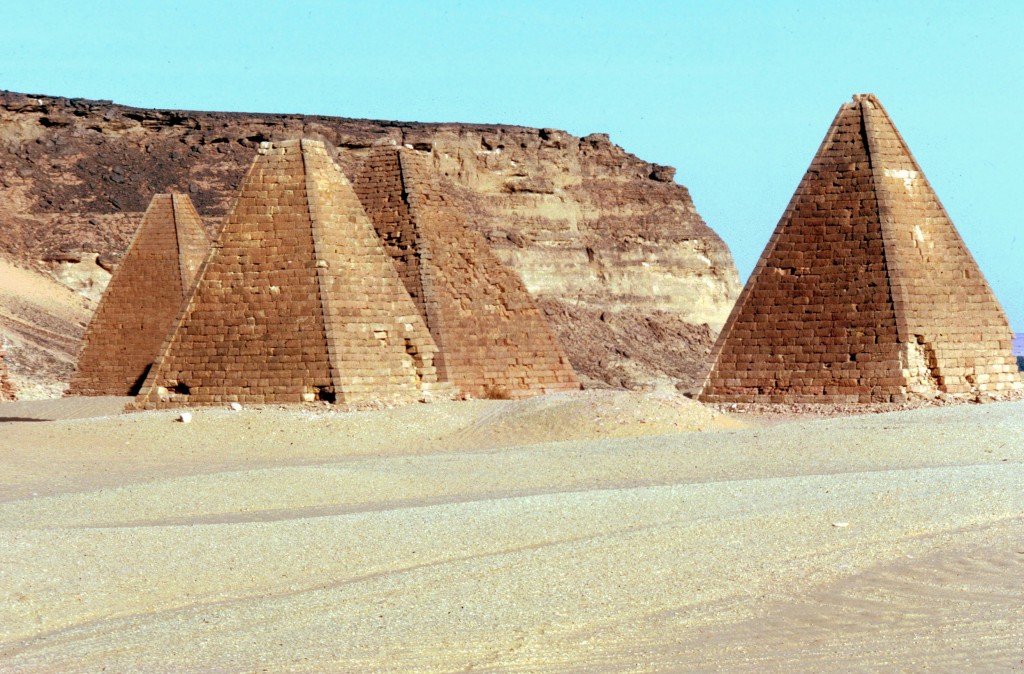
The Pyramids of Napata, at today’s Karima in Northern Sudan, nearby the Mount (Jebel) Barkal; Napata was the capital of the Cushitic Kingdom of Ancient Sudan (the true Ethiopia). These monuments are common heritage to Arabic speaking Sudanese (who are ethnically Cushitic) and to modern Cushitic nations of Eastern Africa, notably the Oromos, the Sidamas and the Kaffas.

Salma Islam, Egypt’s indigenous Nubians continue their long wait to return to ancestral lands (24 July 2017): https://www.pri.org/stories/2017-07-24/egypt-s-indigenous-nubians-continue-their-long-wait-return-ancestral-lands
Amy Maxmen, In Sudan, Rediscovering Ancient Nubia Before It’s Too Late (19 February 2018): https://undark.org/2018/02/19/nubia-sudan-amara-west-archaeology/
{In this case, the postmodern rejection of a) George Reisner’s false identification of the Ancient Cushitic nation of Sudan as Negroid and b) his racist assumption as per which Ancient Sudan’s (i.e. Cush’s) “native negroid race had never developed either its trade or any industry worthy of mention, and owed their cultural position to the Egyptian immigrants and to the imported Egyptian civilization” comes as a new type of even more distortive racism like that of the notorious Stuart Tyson Smith, who has embarked on a more obscure project of overwhelming Nubianization of the Cushitic / Meroitic past of Ancient Sudan (i.e. real, historical Ethiopia)}. Even worse, the new racism is absolutely Zionist of inspiration and benefit.
h ttps://undark.org/2018/02/19/nubia-sudan-amara-west-archaeology/

The pyramids of Meroe (near modern Bagrawiyah) represent a later period of the Cushitic kingdom of Ancient Sudan (i.e. Ethiopia); these pyramids are not ‘Nubian’.
Amongst others, the Khan Academy takes a particular interest in diffusing the Nubianization dogma. The same is valid for the Metropolitan Museum of Art, which is known for its most mistaken online presentations. This propaganda is coupled with misleading presentations featured in the National Geographic.
Bridgette Byrd O’Connor, Nubia and Ancient Egypt
Janice Kamrin and Adela Oppenheim, The Land of Nubia
{Note: It is interesting to observe the frequent mistakes of the various web pages of the Metropolitan Museum of Art’s portal; in the link above, go straight to fig. 8! The legend reads: “The kiosk on Philae Island probably built by the Emperor Augustus (30–14 B.C.) Photo by Adela Oppenheim”! Well, Octavian Augustus reigned from 27 BCE to 14 CE; not just 16 but 41 years!!}
Núria Castellano, Rival to Egypt, the Nubian kingdom of Kush exuded power and gold
The extraordinary confusion of the terms ‘Kushite’ and ‘Nubian’ really exudes from this worthless publication; the two terms are used alternatively and overlapping one another during the whole article, thus fully confusing specialists and non-specialized readers alike. Cushites and Nubians are however ethnically, linguistically and culturally as different from one another as Sumerians were from Elamites or Romans were from Franks.
Indicatively nonsensical excerpt: “Kushite culture blended Egyptian customs into its own, creating a distinctive, visual style. Truncated and with steep sides, the pyramids left by the long line of Nubian kings populate the desert near the site of Meroe”.
How well fallacious colonial historiography and Western political interference propaganda are interconnected one can admire in the site of the Minority Rights Group International (https://minorityrights.org/about-us/). Excerpts:
“The Nubian city of Meroë”: not one Nubian lived in Meroe in the past, and not one Nubian lives there now!
“Coptic Christianity spread to Nubia, where a Christian kingdom existed from the sixth to the fourteenth centuries. At the end of this period Nubia adopted Islam, 700 years later than the north of Egypt”: that’s totally wrong! Three Christian kingdoms (not just one) existed in South Egypt and North Sudan over the said period (“from the sixth to the fourteenth centuries”), but only the northernmost was Nubian. The other two Christian kingdoms were Cushitic, not Nubian. As Nobatia merged with Makuria, it lost its northern territories. Aswan became Muslim in the beginning of the 10th c., i.e. only 300 years “later than the north of Egypt”!
For more mistakes, here: https://minorityrights.org/minorities/nubians/
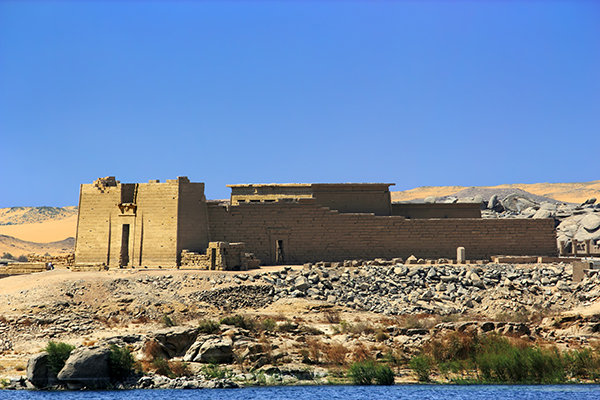
The temple of Maluli (Mandulis) at Tarmes/Talmis (modern Kalabsha) is one of the very few truly Nubian monuments. This is so because during the Antiquity the Nubians were culturally assimilated into the Egyptians and the Cushites /Meroites. To be saved from the rising waters of the lake behind the High Dam of Aswan, the temple was transported 75 km from its original site not far from the western side of the High Dam.
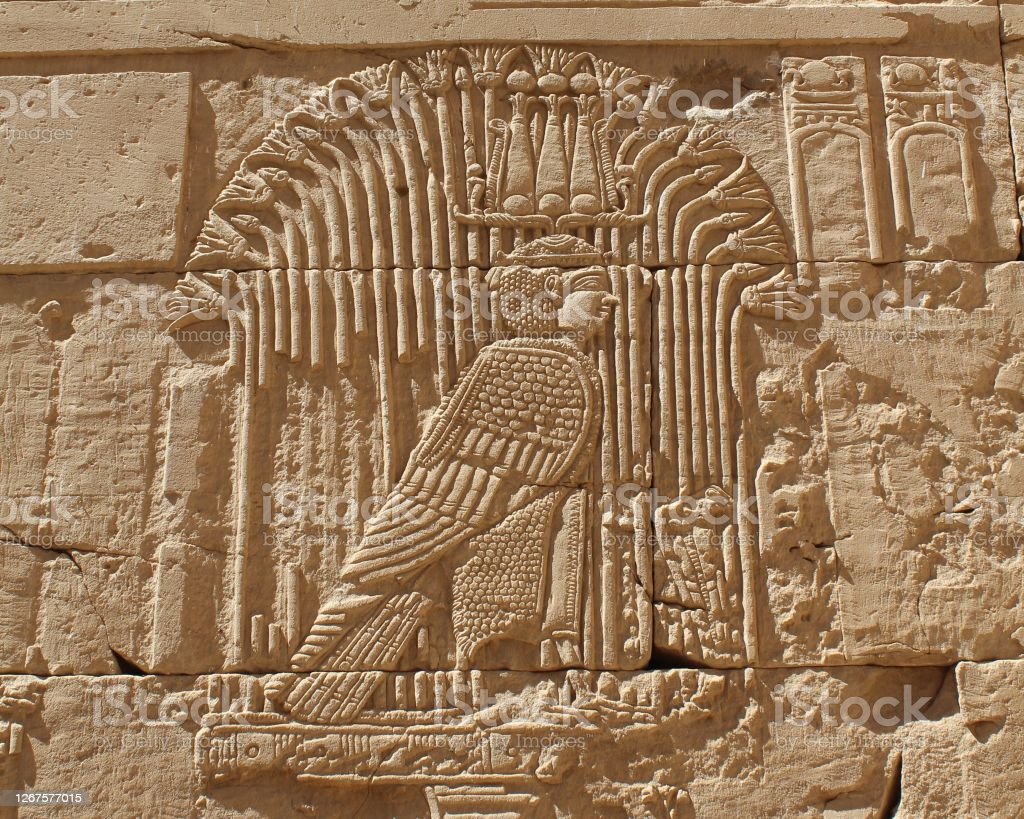
The Nubian God Mandolis in the Kalabsha temple near the High Dam of Aswan
With the exception of a) the Nilo-Saharan nations, b) the Niger-Congo ethnicities, c) the Bantu ethnic groups, d) the Khoisan group of people, and e) the Semitic-Yemenite origin Abyssinians (Amhara-, Tigrinya-, and Tigre-speaking), Africa is home to Hamitic nations.
Contrarily to the Semites, who originate from Asia, the Hamites are indigenous in Africa. As a matter of fact, the Hamitic group of nations is Africa’s largest in terms both of geographical area and number of native speakers. The Hamitic nations are the only to have created high-level civilizations in Africa, contrarily to the Nilo-Saharan, Niger-Congo, Bantu and Khoisan nations, which -due to advanced tribal fragmentation- did not develop major empires and thus remained at a primitive level of social organization until recent historical periods.
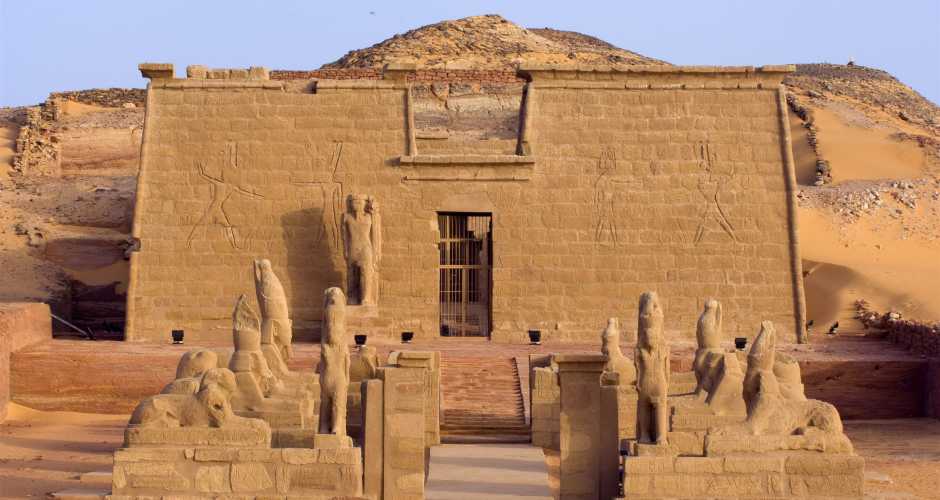
The temple of Wadi as Sebua (150 km south of Aswan) was built by Ramses II on the same location of an earlier temple constructed by Amenhotep II. To be saved, the temple was transported 4 km from its original place.
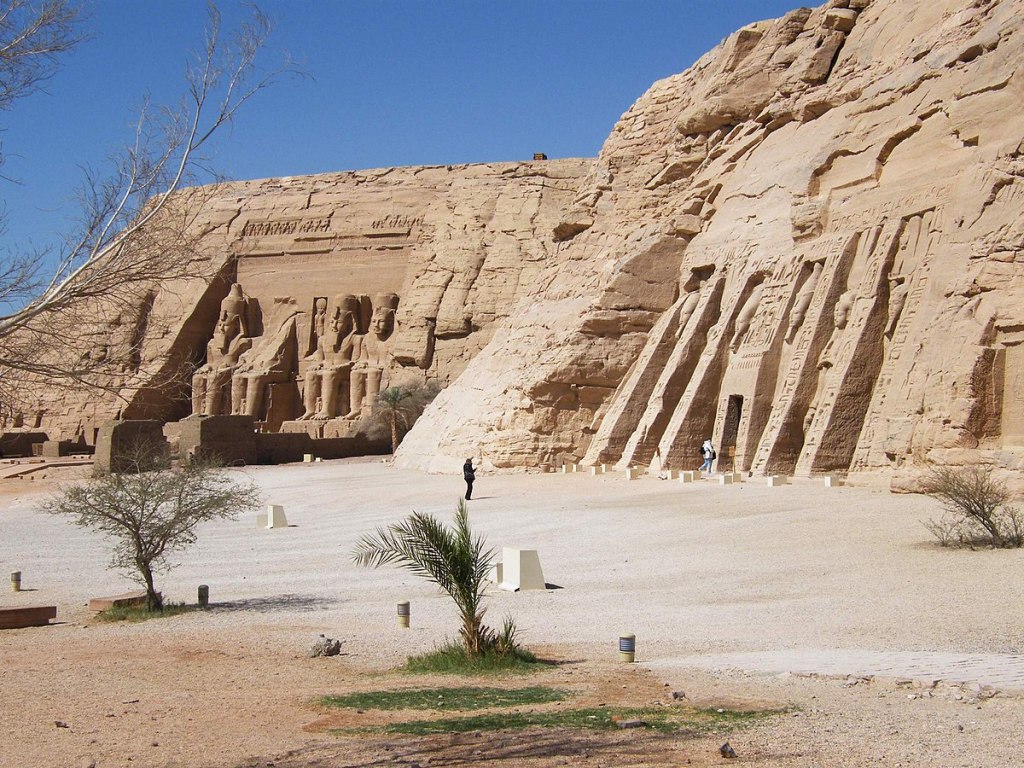
The two temples of Abu Simbel (275 km south of Aswan), close to the modern borderline between Sudan and Egypt, were built by Ramses II to function as mortuary temples for him (the great temple) and for his queen Nefertari (the small temple). To be saved, the two temples were transported to a higher elevation.
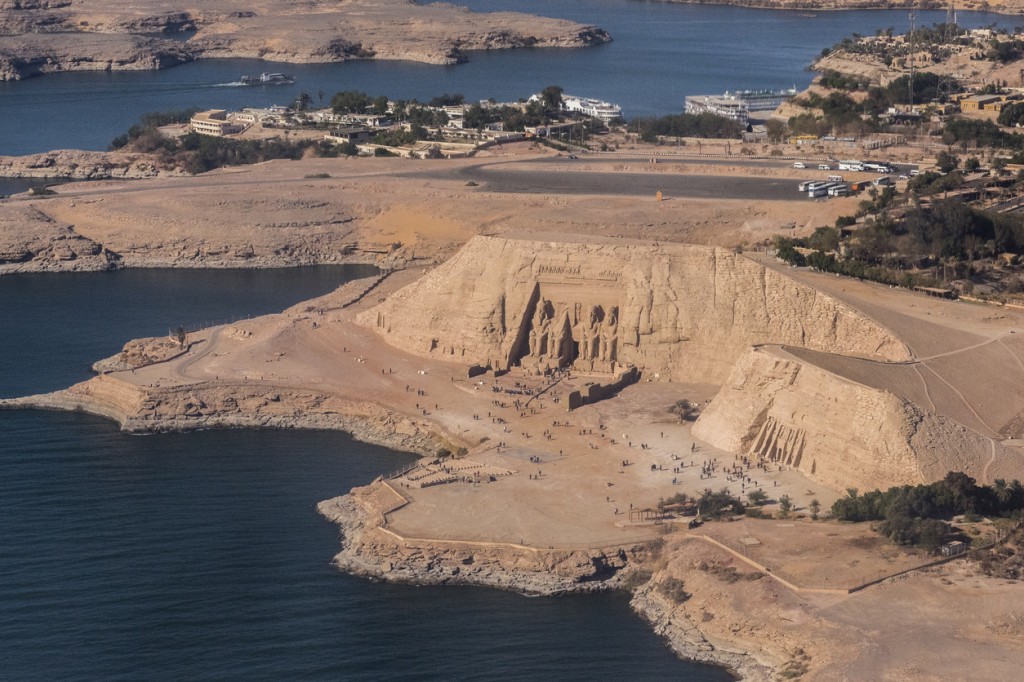
In the Antiquity, the Hamitic nations covered already Africa’s largest part, namely the entire northern half from the Atlantic Ocean to the Red Sea, Sahara included, and the Eastern part of Africa down to the area of today’s Dar es Salaam in Tanzania. The Ancient Kemetians (Egyptians), the Ancient Cushites (Ethiopians – so, unrelated to Abyssinians), the Ancient Kingdom of Somalia (Punt), and the Ancient Berbers (called ‘Libyans’ by the Ancient Greeks and Romans) of the wider Atlas region, who inhabited the vast space from Modern Egypt’s western confines to the Atlantic Ocean, were the major and the most advanced Hamitic nations fostering civilization throughout Africa and Europe during four millennia of pre-Christian era.
Except the Hamites, the Phoenicians (a North-Western Semitic nation) developed great centers of civilization in Africa; but they were mainly concentrated in the northern coastal areas where they settled and developed several colonies like notably Carthage which was founded in 814 BCE. The Carthaginians (Qart Hadasht means ‘New City’ in Ancient Phoenician) became totally independent of the Phoenician city-kingdom of Tyr from where they originated; they created a formidable African maritime empire, colonizing Sicily, Sardinia, the Baleares, Spain and Portugal, other South European coasts, and the entire North-Western coasts of Africa. However, what we now call ‘Carthaginian’ or ‘Punic’ (from the Latin word for ‘Phoenician’) Civilization is a mixed, Phoenician and Berber (Hamitic African) synergy and interaction. Africa’s circumnavigation undertaken by Phoenician navigators, who were employed by the Berber (‘Libyan’) Pharaoh Nechao II (610–595 BCE), was another major Hamitic-Semitic interaction that took place in the Antiquity.
Significant Hamitic-Semitic cooperation also took place in the Horn of Africa region during the Late Antiquity, when first the Ancient Yemenite kingdoms of Qataban and later Sheba (the Sabaeans) and Himyar colonized the region from the Horn itself (Raas Caseyr or Ras Asir in Af Somali; known as Cape Guardafui in Western languages) down to Dar es Salaam (Rhapta in Ancient Greek) and entered in extensive intermarriages with the local Somalis to consolidate their regionally unmatched commercial supremacy. This, vast, Eastern African colony of the Ancient Yemenites was named ‘Azania’ by an anonymous Alexandrian Egyptian merchant and captain, who authored the Periplus of the Red (‘Erythraean’)) Sea (2nd half of the 1st c. CE); in contrast, the exceptionally informative and accurate writer called the Northern Somali coast (from the Bab el Mandeb straits of the Red Sea to the Horn itself) ‘the Other Berberia’.
‘Azania’ corresponds to the historical Chinese term Zesan (澤散), which was in use already in the 3rd c. CE. Contrarily to Azania, which at those days was ruled by the Marib-based Yemenite King of Sheba, ‘the Other Berberia’ was self-ruled (with the local elders in control after the Yemenite fashion, i.e. similarly with the ‘mukarrib’). The use of the name ‘the Other Berberia’ for the entire region of Northern Somalia clearly suggests close ethnic relationship with the coastal Cushitic inhabitants of the today’s Eastern Sudanese regions, because those lands were called ‘Berberia’ in the aforementioned text that was written by a well-informed entrepreneur and voyager, who had apparently traveled extensively between Egypt and Indonesia, if not China. The term also denotes the close relationship between the North-Western African Hamites of the Atlas region (Berbers) and some of Eastern Africa’s Cushites.
The colonial, academic etymology of the noun ‘Berber’, as supposedly related to the Ancient Greek onomatopoetic term ‘barbaros’ (barbarian), is a racist invention and aberration. There has never been any historical, philological, ethnographic, linguistic or ethno-sociological proof about an eventual association between the ethnonym ‘Barbar’ / ‘Berber’, as used by several ancient authors, and the word ‘barbarian’. To offer an example, in the sixth paragraph of the Periplus of the Red (‘Erythraean’) Sea, the use of the adjective ‘barbarika’ has clearly an ethnic connotation (Berber), being totally unrelated to the common Ancient Greek adjective “barbarian’:
“ιμάτια Βαρβαρικά άγναφα, τα εν Αιγύπτω γενόμενα, Αρσινοϊτικαί στολαί”
(imatia Barbarika agnafa, ta en Aigypto genomena, Arsinoitikai stolai)
https://el.wikisource.org/wiki/Περίπλους_της_Ερυθράς_Θαλάσσης
“undressed cloth made in Egypt for the Berbers; robes from Arsinoe”
https://en.wikisource.org/wiki/Periplus_of_the_Erythraean_Sea
The grossly identification of the ethnonym ‘Berber’ with ‘barbarians’ and the deliberate colonial etymology of this ethnonym from the Ancient Greek word ‘barbaros’ (barbarian) demonstrate the enormous hatred harbored by colonial historians against the Berbers and the Hamites. Involving causality between a hypothetical, fictional status of barbarism among the Eastern Hamites-Cushites of the coast of today’s Sudan and North Somalia and the appellation that the Ancient Greeks and Romans used to denote these and other Ancient Hamitic-Cushitic nations is an outrage. However, it helps today’s unbiased academics from China to Africa to Latin America realize how monstrously distortive the colonial Greco-centric model of History is.
It is however necessary at this point to underscore the fact that this provocative colonial bias does not reflect any eventually racist consideration among the ancient authors; on the contrary, all of the ancient authors expressed a great part of esteem and consideration for the Hamitic-Cushitic Berbers. In modern times, the first attempt to establish a causality link between the ethnonym ‘Berber’ and the Ancient Greek word ‘barbaros’ (barbarian) is attested in the case of the so-called ‘Barbary Coast’, a noxious, racist term coined for the coastal region of North Africa from today’s Libya to Morocco.
The extremely derogatory term was extensively used from the 16th to the 19th c. (until these provinces of the Ottoman Empire were colonized by the Western European racist gangsters) and, even worse, served as pretext for colonial wars, projection of Eurocentric falsehood of History, and exportation of European and North American Yankee criminality on those parts of Africa. Still today, the verses “From the halls of Montezuma to the shores of Tripoli” (from the disreputable and evil US Marines’ Hymn) remind us of the monstrous association of the ethnonym ‘Berber’ with the Ancient Greek word ‘barbaros’ (barbarian), and of its dangerous impact. More details about this forgery one can get here:
https://en.wikipedia.org/wiki/Berbers#Name
https://en.wikipedia.org/wiki/Names_of_the_Berber_people
https://en.wikipedia.org/wiki/Libu
https://en.wiktionary.org/wiki/Berber
https://en.wikipedia.org/wiki/Barbary_Coast
https://en.wikipedia.org/wiki/Marines%27_Hymn
Even worse, over the past decades, colonial historians, linguists, archaeologists, and ethnographers went further adrift and even rejected (without a proper academic refutation) the existence of the Hamitic nations, which had been accepted earlier and for more than 250 years of Western European scholarship. The absurd rejection of the existence of the Hamitic nations is only the result of extreme Jesuit, Freemasonic and Zionist fanaticism and colonial forgery; it first started with the farcical subordination of the Hamites to the Semites and the subsequent construction of the erroneous term ‘Hamito-Semitic linguistic group’. Over the past 6-7 decades, all sorts of nonsensical justifications, pretexts and innuendos have been incessantly used so that the highly politicized authors, known for their heavily ideologized motives, possibly ‘prove’ that the Hamitic languages do not exist as a fully independent linguistic group.
To carry out the unprecedented forgery, as per which there have never been Hamitic languages (sic!), numerous biased explorers and bogus-academics, incredible pseudo-intelligentsia, and mysterious apparatchiks
1) separated Hausa and several other Hamitic languages from the rest, identifying them as ‘Chadic’ (which is tantamount to shameless academic terrorism);
2) pretended that the ‘remaining’ three branches of Hamitic languages (Berber, Egyptian-Coptic, and the Eastern Cushitic group of languages) do not form an exclusive phylogenetic unit of their own (which is a paranoid lie);
3) viciously denigrated many great scholars, historians and linguists, of the 19th c. and the early 20th c. as ‘racists’, because they correctly and extensively underscored the Hamitic-Cushitic cultural superiority over all the other African ethnic-linguistic groups (which is a hysteric form of historical revisionism);
4) generated the pseudo-theory of scientific racism, which is a scheme as per which the criminal Jesuit, Freemasonic and Zionist pseudo-academics disreputably and nonsensically disparage at will numerous great scholars of the 19th c. and 20th c., who had steadfastly rejected such evil theories and inhuman concepts diffused by those villains;
5) deliberately and defamatorily associated many great European scholars and specialists of various Hamitic languages and civilizations with colonialism (which is preposterous and false);
6) attempted to refute the evident relationship between the Hamitic nations and the Caucasoid peoples;
7) fabricated an absolutely meaningless, erroneous, and pathetic term ‘Afro-Asiatic languages’ in order to depict the Hamitic-Cushitic family of nations as totally subordinated to the Semitic nations; and
8) theorized that the modern academic bibliography about the Hamitic nations (that they mistakenly rejected) was mainly due to religious (sic!) reasons pertaining to the fake Biblical and Talmudic story, which is known as the ‘Curse of Ham’. This idiotic approach and bogus-theory bears witness to sheer dementia, because many scholars, who had correctly accepted the reality of the Hamitic nations, languages and civilizations, were known for having totally rejected Judaism and Christianity. Consequently, they could not therefore be influenced by these religions and the related holy books in their research.
The absurd rejection of the existence of Hamitic nations, languages and civilizations by the militant pseudo-scholars and propagandists of today’s collapsing Western World has so many internal contradictions that easily one can identify, refute and irrevocably denounce the inconsistencies of the advanced arguments. However, it is important for all to bear in mind that the pseudo-scientific fabrication ‘Afro-Asiatic languages’ and the associated anti-Hamitic / anti-Cushitic hysteria, are due to two main targets sought after by the colonial academia and regimes:
First, this dogmatic nonsense allowed politically motivated academics and colonial diplomats to incessantly propagate the abhorrent fallacy of Pan-Arabism, as per which the Arabic-speaking populations of North Africa are Arabs (and therefore of Semitic origin), whereas in reality, not even one drop of Arab blood flows in the veins of today’s Egyptians, Libyans, Sudanese, Tunisians, Algerians, Moroccans and Mauritanians. Linguistic Arabization has been a marginal phenomenon that was promoted by the colonial powers and their local stooges only during the last 220 years.
There have actually been innumerable Arabization campaigns in the colonially detached provinces of the Ottoman Empire; they were all carried out by the evil local tyrants-puppets of the colonial powers. Whether they have one native language (speaking Arabic, Berber and Coptic) or they are bilinguals, all the populations of Northern Africa are Hamitic of origin and therefore totally unrelated to Arabs or Semites. Assuming that the Egyptians, the Tunisians or the Algerians are ‘Arabs’, just because they speak Arabic, is tantamount to pretending that the African Americans, who are English native speakers, are / can ever be (considered as) …. Anglo-Saxons!!
Second, the paranoid abnegation of the existence of Hamitic nations, languages and civilizations helped politically motivated academics and diplomats to
a) boost an enormous Pan-Bantu propaganda movement, which tries to fallaciously increase the importance of the Bantu contribution to the History of Africa;
b) emphasize erroneously the otherwise nonexistent relation between the Hamitic Ancient Egyptians and the Bantu tribes of Africa’s southern parts;
c) carry out a project of extensive Nubianization of part of the Ancient Kemetian (Egyptian) historical heritage (across Modern Egypt’s territories located south of Aswan); and
d) delete the Ancient Cushitic historical heritage (which belongs to i) today’s Arabic-speaking people of Sudan’s central provinces and ii) today’s Eastern Cushitic nations, namely the Oromos, the Sidamas, the Kaffas, etc.), by fallaciously attributing it entirely to today’s Nubians, who live in North Sudan. Selected bibliography on the topic can be found here:
https://en.wikipedia.org/wiki/Hamites
https://en.wikipedia.org/wiki/Scientific_racism
https://en.wikipedia.org/wiki/Caucasian_race
https://en.wikipedia.org/wiki/Afroasiatic_languages
https://en.wikipedia.org/wiki/Curse_of_Ham
The aforementioned fallacies may be crucial for the future of all Cushitic and Hamitic nations of Africa, either they enjoy nominal national independence or not, either they retain their historical language or not. As a matter of fact, it probably heralds a well-programmed political subordination to Semitic groups, a systematically prepared projection of evil faiths, cults and practices, as well as of anti-Cushitic/anti-Hamitic immoral norms and behavioral systems among today’s Eastern African Cushites (Rastafarianism), and the racial amalgamation of Eastern Cushites with Bantu tribes of the African South.
—————————————
Download the text of the notes in PDF:
